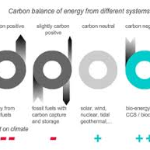
US Carbon Price: Assigning Carbon Value Through Utilization by CO2 Negative/RCP 2.6
Pitch
Not all carbon has equal value due to the variances in the environmental effects of the carbon and/or the utilization value of the carbon.
Description
Summary

(RCP 2.6)
Finding a simplistic method for FF companies to comply with any carbon credit plan is an important factor in gaining industry/policy support. However, not all carbon has equal value due to the variances in the effects of the carbon within various biomes and/or the eventual utilization value and/or the sequestration verification of the removed carbon. The issues are suprimely complex.
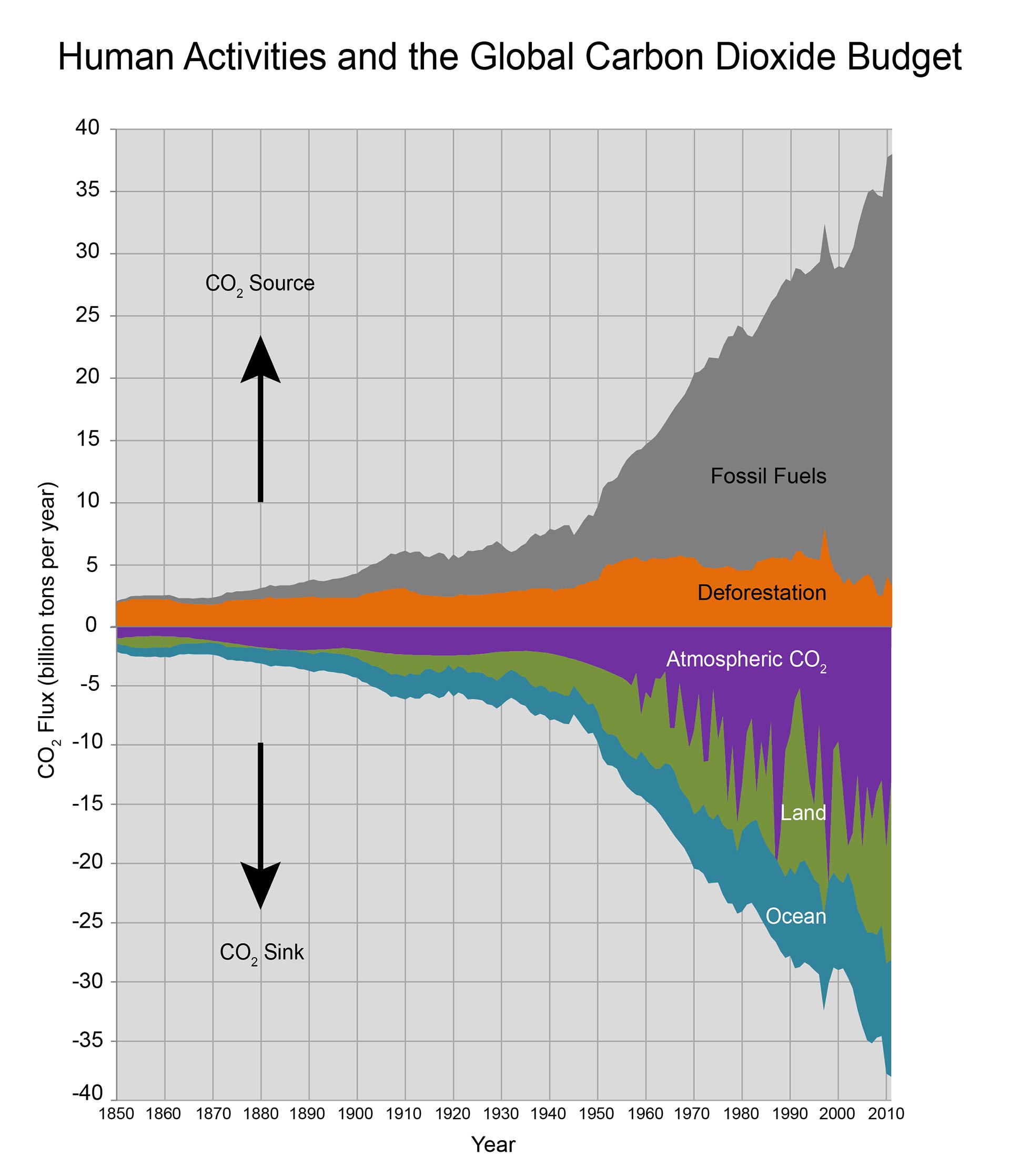
Biochar is a prime example of a carbon capture, utilization and sequestration (CCUS) method which keeps on sequestering even more carbon over many years while also addressing multiple other critical needs such as soil health, increased food productivity etc. (e.g. utilization). Thus, from a CCUS perspective, biochar should be viewed as the 'gold standard'. To date, no other method of CCUS, which can achieve such high levels of combined utilization and sequestration value, has been proposed (much less demonstrated).

In the prior case of carbon's overall degree of negative effect(s) within differing biomes. A prime example of this value differentiation can be found within the strategic question of; From a total planetary environmental viewpoint, is it more valuable to the overall effort to remove the carbon from the ocean waters (and thus directly addressing ocean acidification) or removing the carbon directly from the atmosphere (thus directly address planetary warming)?
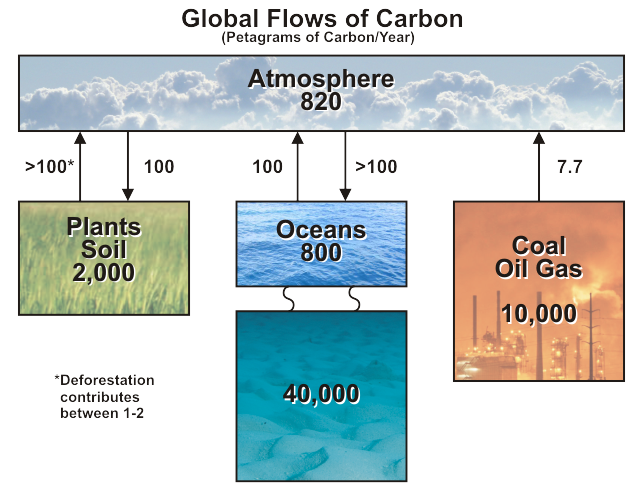
Other such examples of 'environmental valuation of CDR' are available yet the above hopefully makes the point.
This overall CDR priority issue has been a long-term low level debate within the geoengineering community and should be resolved and periodically reviewed as new/different CDR methods are brought to the table.
Other national and international carbon valuation programs, such as the Climate Bond Initiative, can also be linked with this proposal. The full list of related MIT CoLab proposals calling for a unified valuation/funding regimen are listed below.
What actions do you propose?
The primary action this proposal suggests is the creation of a standing scientific committee which would create and maintain a knowledge base concerning the best STEM and funding avenues associated with global carbon cycle management.
Biochar is emerging as a 'gold standard' as far as carbon utilization/sequestration (i.e. soil/crop improvement, out-year continued C sequestration, bio-energy production etc.) and is highly supported by the IPCC (WG3) under the classification of Bio-Energy with Carbon Capture and Sequestration (BECCS).
The below information is from other related proposals:
"Today we need a global Apollo programme to tackle climate change; but this time the effort needs to be international. We need a major international scientific and technological effort, funded by both public and private money.". (Excerpt from: A GLOBAL APOLLO PROGRAMME TO COMBAT CLIMATE CHANGE)

The above advocates for massive international concentration of political and capital strength on deployment of solar energy means and methods to achieve the needed CO2 reductions. This position is understandable and supportable.
However, carbon neutral energy means and methods, such as solar energy conversion, are no longer adequate to forestall drastic climate change. At this time, the full spectrum of the water, carbon negative energy and nutrient nexus management needs must be factored into any form of 'Global Apollo Programme to Combat Climate Change'.
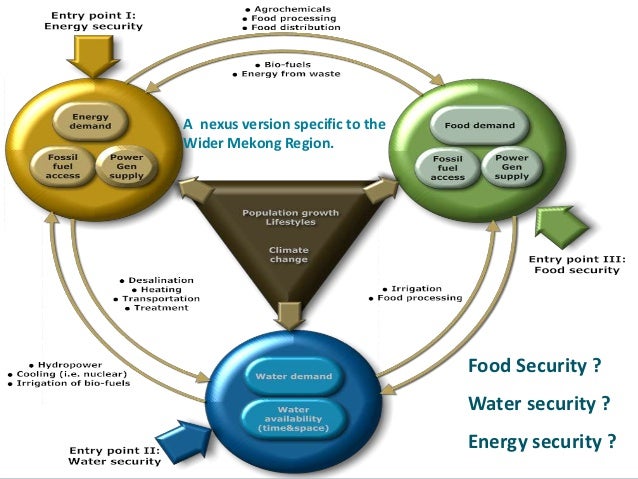
Primary action/principle being proposed: Vast scale use of chemosynthetic and or heterotrophic cultivation of biomass as a means for urban, rural, marine and overall global scale water, energy and nutrient nexus (WENN) management.
Funding for this WENN management regimen can be achieved through the use of environmentally focused intergovernmental agreements, market funding instruments and/or non-profit funding programs such as:
1) The most forward leaning intergovernmental climate change mitigation/adaptation agreement is summarized by the US Department of State. In part:
- Commitment by developed countries to the goal of mobilizing jointly USD $100 billion per year by 2020 from public and private sources, to address the needs of developing countries in the context of meaningful mitigation actions and transparency on implementation
- A call to establish the Green Climate Fund, a new multilateral trust fund designed to foster low emission and climate resilient development and catalyze private sector investment.
2) The Green Climate Fund (a):
"..the Fund will promote the paradigm shift towards low-emission and climate-resilient development pathways by providing support to developing countries to limit or reduce their greenhouse gas emissions and to adapt to the impacts of climate change, taking into account the needs of those developing countries particularly vulnerable to the adverse effects of climate change.".

In the non-intergovernmental space, a growing number of important market funding paths are being developed. Such as:
3) Green Bond Principles 2014: Voluntary Process Guidelines for Issuing Green Bonds:




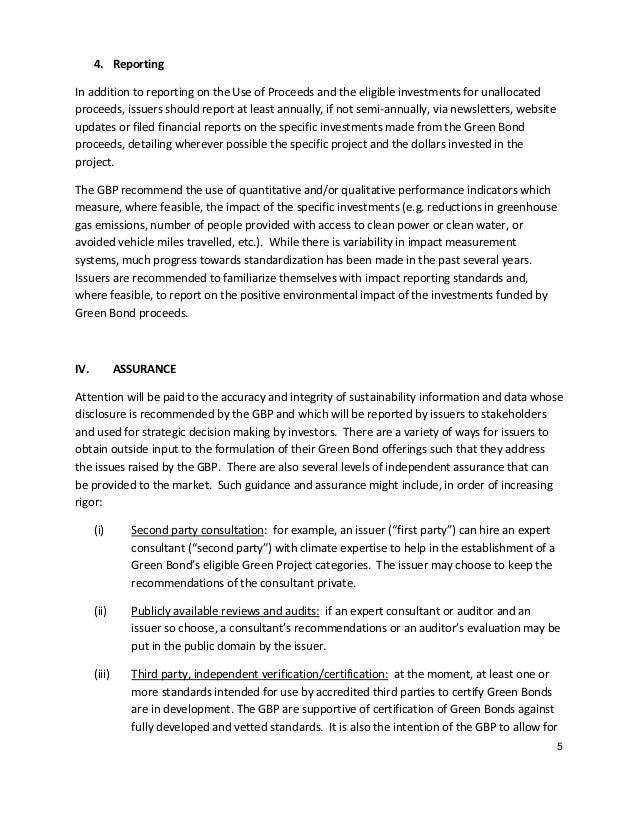
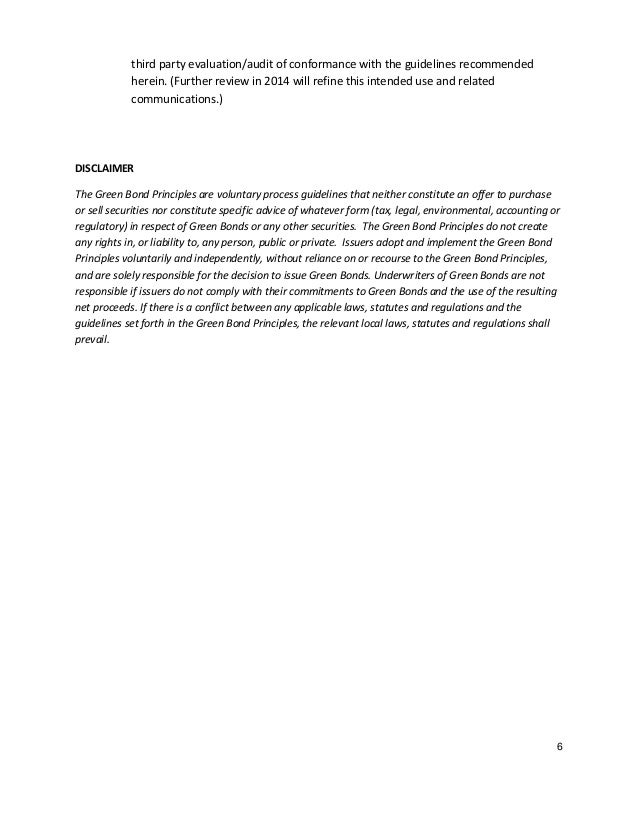
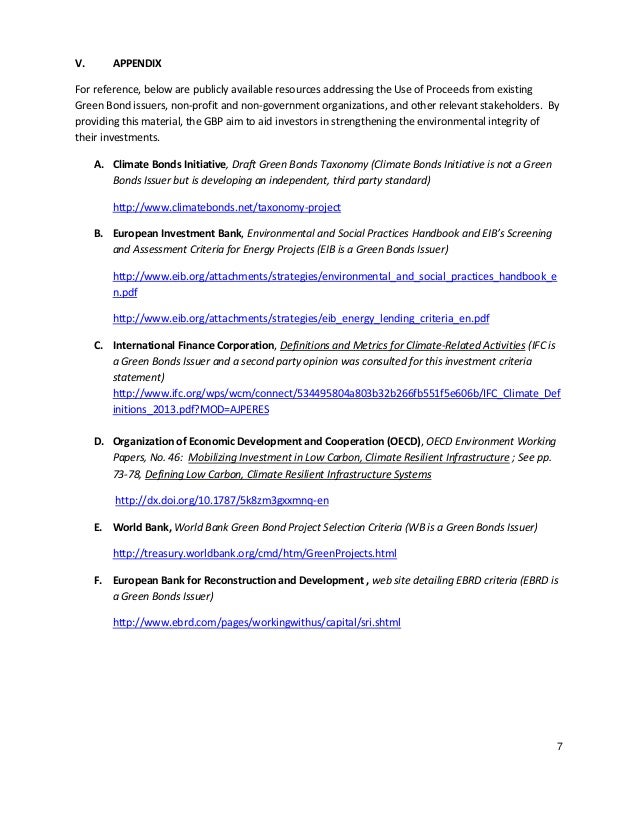
"Funding for new technologies that permit significant reductions in greenhouse gas (GHG) emissions"
"Strengthen national preparedness and resilience, building a ready and resilient Nation, with the ability to plan, prepare for, and respond to disasters. Proposals for climate resilience coupled with a restructured DHS grant program will help create robust national preparedness capabilities.".
6) "Transforming the Traditional Municipal Bond Market to Finance Environment-Friendly Green Projects"
"In 2013 Massachusetts became the first state in the U.S. municipal bond market to issue these so-called green bonds. The offering was so successful that Massachusetts tripled the volume of green bonds offered in 2014, selling $350 million in bonds to individual and institutional investors this month. According to Massachusetts Treasury officials, the demand for green bonds far outpaced the supply. The Treasury reportedly received received $1 billion in buy orders for the $350 million bonds offered. billion in buy orders for the $350 million bonds offered.".
7) ‘Conservation Bonds’ Take Green Financing to the Next Level
"Green bonds, as described by the World Bank, “are fixed income, liquid financial instruments that are used to raise funds dedicated to climate-mitigation, adaptation, and other environment-friendly projects.” When issued by multilateral institutions such as the World Bank, or agencies of national governments such as the German Development Bank, such bonds may carry low, or even concessionary interest rates. Furthermore, a number of private financial institutions, attracted by the reliable returns on projects financed by green bonds, have entered the marketplace.
The Green Bond market is rapidly growing. First issued by the World Bank in 2007, the green bond market grew to $11 billion in 2013. As reported by the World Bank, some $32 billion of green bonds have been issued by multilaterals, governments and corporate issuers from January through October 2014, and could surpass $40 billion for the year.".
"Green bonds were created to fund projects that have positive environmental and/or climate benefits. The majority of the green bonds issued are green “use of proceeds” or asset-linked bonds. Proceeds from these bonds are earmarked(link is external) for green projects but are backed by the issuer’s entire balance sheet. There have also been green "use of proceeds" revenue bonds(link is external), green project bonds and green securitized (link is external) bonds.".
"The accredited institutions include the following:
- Centre de suivi écologique (CSE) from Senegal, which focuses on combating desertification and protecting coastal areas. In 2010, CSE was the first national institution to be accredited and to implement a project through the Adaptation Fund , the first international climate fund to take the pioneering step of accrediting developing country institutions.
- Fondo de Promoción de las Áreas Naturales Protegidas del Péru (PROFONANPE) that specializes in funding biodiversity conservation and managing protected areas. Like CSE, PROFONANPE is also accredited to the Adaptation Fund.
- the Secretariat of the Pacific Regional Environment Programme (SPREP), an intergovernmental organization of Pacific Island countries and territories, based in Samoa, which focuses on protection and sustainable development of the Pacific region’s environment
- the Acumen Fund, Inc. (Acumen), a well-respected private venture capital fund that invests in developing country entrepreneurs and businesses working to alleviate poverty and advance sustainable development. The social impact investment fund works on improving the lives of low income communities in Africa and Asia, especially in healthcare, agriculture and clean energy.
Three international organizations were also accredited: the Asian Development Bank (ADB), Kreditanstalt für Wiederaufbau (KfW), and the United Nations Development Programme (UNDP).".
10) "Major International Research Initiative Launched to Improve Food Security for Developing Countries - Bill & Melinda Gates Foundation." (a).
"Listening to farmers and addressing their specific needs. We talk to farmers about the crops they want to grow and eat, as well as the unique challenges they face. We partner with organizations that understand and are equipped to address these challenges, and we invest in research to identify relevant and affordable solutions that farmers want and will use.
- Increasing farm productivity. We support a comprehensive approach to helping smallholder farmers prosper that includes access to heartier seeds, more effective tools and farm management practices, locally relevant knowledge, emerging digital technologies, and reliable markets. We also advocate for agricultural policies that support farmers in their efforts to better feed themselves and their communities.
- Fostering sustainable agricultural practices. In an era of increasingly scarce resources and growing impact of climate change, we encourage farmers to embrace and adopt sustainable practices that help them grow more with less land, water, fertilizer, and other costly inputs while preserving natural resources for future generations.
- Achieving greater impact with partners. We are committed to communicating our strategy more effectively and sharing what we’ve learned with grantees and other partners, including governments, nongovernmental organizations, traditional and emerging donors, and the private sector. Our resources, while significant, represent only a fraction of what is needed. Collaborating effectively with others maximizes our collective impact in helping farming families.".
The above list of funding paths is not exhaustive and many existing and future environmental focused funding programs can be coupled together to provide a comprehensive list of funding options for all WENN management scenarios ranging from the smallest rural communities; the largest of metropolitan cities; remote rural areas, marine solutions and/or entire global regions.
This proposal calls for the creation of a Benefit Corporation (B Corp), with an international scope and benefit mission which can lead the way in the establishing standards and practices associated with WENN local/regional STEM management, funding and policy development.
The B Corp mission statement can use modified language found in many bio-energy development related agencies, such as the Department of Energy's Office of Bioenergy Technology, while employing an international perspective.
The mission of the Office of Bioenergy Technology is stated as follows:
"Develop and transform our renewable biomass resources into commercially viable, high-performance biofuels, bioproducts, and biopower through targeted research, development, and demonstration supported through public and private partnerships."
The goal of the Office is to develop commercially viable bioenergy and bioproduct technologies to:
· Enable sustainable, nationwide production of biofuels that are compatible with today’s transportation infrastructure, can reduce greenhouse gas emissions relative to petroleum-derived fuels, and can displace a share of petroleum-derived fuels to reduce U.S. dependence on foreign oil.
· Encourage the creation of a new domestic bioenergy and bioproduct industry.
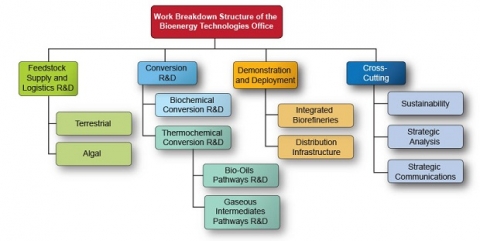
The above language can be crafted to reflect the global need for bio-energy independence, climate change mitigation/adaptation, water recovery/creation and bulk nutrient management. Additionally, the final draft of the mission statement should be the subject of a...brief...international debate so as to flush out any strong objections from the STEM, policy or civil society sectors.
Once the B Corp is established and the WENN specific funding matrix is customized per specific locations (i.e. cities, rural, marine, regional etc.), multiple on-the-ground projects can be initiated simultaneously around the planet.
Who will take these actions?
It is suggested that a voluntary group of concerned and knowledgeable individuals prepare an in-depth analysis of the global carbon cycle management technological options as well as a preliminary carbon price scale based upon current environmental needs and the current carbon capture, utilization and sequestration technologies.
This consulting group can initially focus their efforts upon issuing the preliminary report to the Office of Management and Budget (OMB) as that office typically addresses complex scientific and budgetary issues for the U.S. Administration.
Obviously, the members of this carbon valuation committee should be free from vested interests within any related carbon capture, utilization or sequestration commercial efforts.
What challenges will be faced in implementing this proposal and how will they be overcome?
The primary challenge will be establishing a firm reputation as 'the' leading global expert committee on our global carbon cycle management options.
How much will emissions be reduced or sequestered vs. business as usual levels?
The overriding goal of this effort will be to achieve net negative global CO2 emissions as rapidly as possible through guiding investments into the most environmentally advantageous technologies. Thus, if this can be achieved, the net effect would be transformative on multiple environmental, socioeconomic and policy levels.
![]()
Please note that the above map does not differentiate between the many different carbon capture, utilization and sequestration schemes. Thus, carbon pricing, as currently being practiced, can not inform technology investments within industry nor governments.
Once a carbon value scale is established, such critical information would be available to all concerned.
The emissions reduction path (per BECCS class projects) is well covered in:

(RCP 2.6)
The WENN Protocol is relative to 7 of the 8 requirements for meeting RCP 2.6.
What are other key benefits?
By establishing a universal water/energy/nutrient nexus (WENN) management paradigm, it may become possible to manage the global carbon cycle to the degree that we may prevent such environmentally catastrophic events such as:
-Arctic Methane Tipping Point (a)(b)(c)
-super cyclones

-severe droughts/El Nino/El Nina conditions

-Expansion of Low-Productivity Regions in Mid Ocean Gyres

At the socioeconomic level, the vast scale of the oceanic biomass production platforms represent a new form of Movable Artificial Islands which can be used to provide housing and jobs for displaced peoples (a) and or for those simply wishing to earn entry level and middle class incomes.

AAt the policy level, the above offers lowest risk options for managing many of the critical climate and socioeconomic problems we now face. And, the costs can be financed through the sale of Carbon Investment Bonds (a) which may also function as a foundation for a unified international and US carbon price structure.
What are the proposal’s costs?
The cost of forming and maintaining this carbon valuation committee can be within the $550K to $650K annual budget range. This will not only provide compensation for the principle scientific investigators but will also support the technical staff who will collect and maintain the needed knowledge base.
Time line
The committee's initial report can be issued within 6-12 months as most of the knowledge base is available within the 'geoengineering' field of study.
Related proposals
The below 4 proposals are combined as they have common needs/solutions:
Land Use: Agriculture, Forestry, Livestock
Global-Energy-Water Nexus
The below 2 proposals are combined as they have common needs/solutions:
The below 4 proposals are combined as they have common needs/solutions:
Waste Management-Urban Level Energy/Water/Nutrient Nexus Management Through Chemosynthesis
Atypical ideas for CO2 Neutrality-Urban Level Energy/Water/Nutrient Nexus Management Through Chemosynthesis
Urban-Energy-Water Nexus- Urban Level Energy/Water/Nutrient Nexus Management Through Chemosynthesis
The below 5 proposals are combined as they have common needs/solutions:
Energy solutions for Latin America
United States’ Climate Action Plan
The below is a one-off proposal
References
Please watch this NASA video while noting the primary point source of vast scale CO2 emissions from highly urbanized regions:
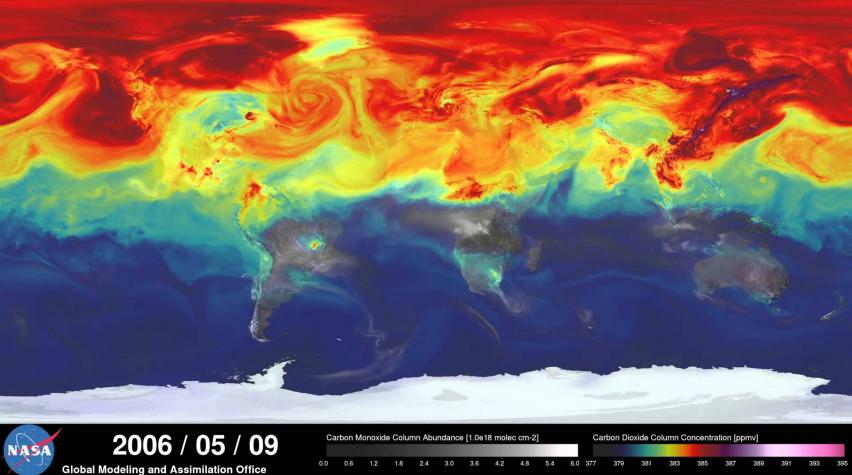
Cities for Climate Protection program
Energy–nutrients–water nexus: Integrated resource recovery in municipal wastewater treatment plants
Chemosynthesis/Oxyhydrogen Reaction in Algae
Hydrothermal conversion of biomass to fuels and energetic materials
AVA-CO2 Achieves a Breakthrough in Phosphorus Recovery and Introduces the "AVA cleanphos" Process
The Blue Biochar Initiative (BBI) website
Gigantic Ocean Vortices Seen From Space Could Change Climate Models
Biochar production from freshwater algae by slow pyrolysis:
Fast pyrolysis of microalgae remnants in a fluidized bed reactor for bio-oil and biochar production
Bio-oil and bio-char characterization from microalgal biomass:
Algal biochar – production and properties:
The Sustainable Shipping Initiative
"Proposed multifunctional OTEC plant
Advances and Innovations in Biochar Production and Utilization for Improving Environmental Quality
An Engineered Microbial Platform for Direct Biofuel Production from Brown Macroalgae
Establishing offshore autonomous communities:current choices and their proposed evolution
baseProposalId=0